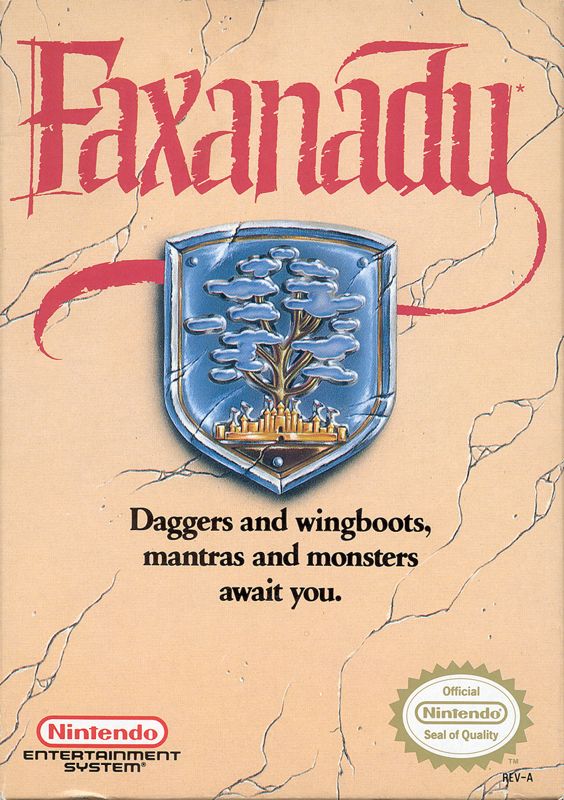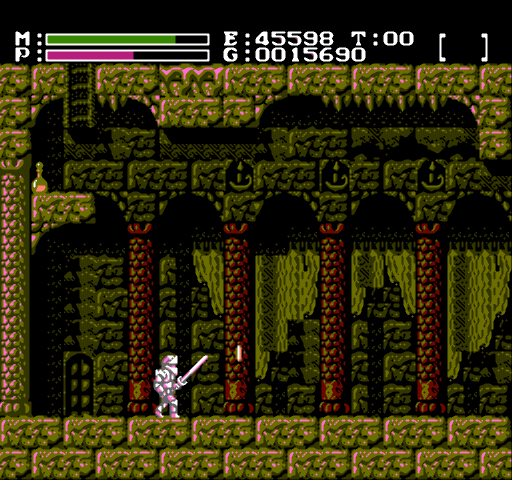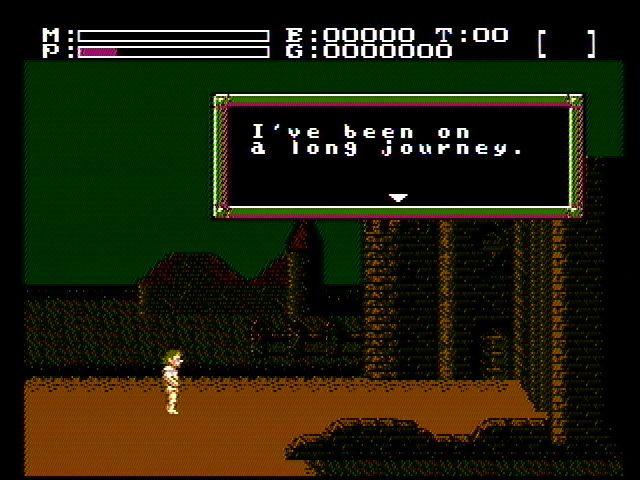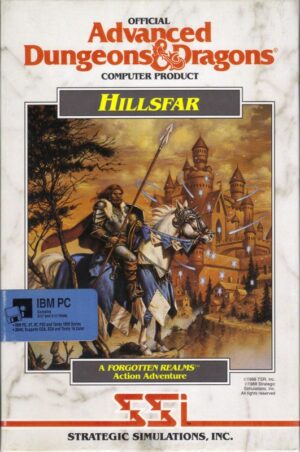Retro Replay Review
Gameplay
Faxanadu combines the precision of 2D platforming with light role-playing mechanics, creating a unique hybrid experience. Players guide a lone warrior through a sprawling series of interconnected caverns and outdoor zones, hopping over pitfalls and ducking under ledges as monsters emerge from every corner. The controls are tight, allowing for smooth running, jumping, and attacking, yet the game’s challenges remain formidable—precision timing and careful resource management are essential for survival.
Beyond basic platforming, Faxanadu features RPG elements that deepen the gameplay loop. As you defeat enemies, you gain experience points that raise your rank and influence the amount of gold you start with after each death or game restoration. Gold can be spent in various towns on swords, armor, healing potions, and magic spells, so every skirmish becomes an opportunity to strengthen your arsenal. This system rewards both skillful play and exploration, as hidden alcoves often contain extra coins or powerful items.
Exploration plays a central role in Faxanadu’s design. The world is divided into distinct regions—medieval-style villages, mossy bogs, torchlit fortresses, and winding caves—each offering new obstacles and enemy types. Some areas require special keys or spells to progress, encouraging backtracking and thorough searching. While the lack of an automap can be daunting for newcomers, it enhances the sense of discovery and achievement once you unlock that secret passage or outsmart a tricky platforming gauntlet.
Graphics
For an NES title, Faxanadu’s art direction is impressively cohesive, evoking a moody, mythic atmosphere throughout its environments. Backgrounds feature detailed stonework in the dungeons and lush foliage in the forested caverns, all rendered in a palette of earthy browns, deep greens, and flickering torchlight hues. Each locale feels distinct, helping players orient themselves as they navigate the World Tree’s labyrinthine root systems.
Character sprites are modest but expressive, with the hero’s armor gleaming under torchlight and enemies sporting clear visual cues to indicate attack patterns. Giant snakes coil ominously on ledges, dwarves pound the ground with hammers, and gnomes skulk in shadows before lunging forward. Magical attack animations—such as fire, ice, and lightning spells—add vibrant color pops that break up the palette and heighten the excitement of combat encounters.
While Faxanadu’s resolution and color depth are limited by 8-bit hardware, the overall presentation remains striking. Fluid sprite animations and atmospheric parallax scrolling in a few key hubs underscore the game’s technical achievements for its era. If you’re seeking retro charm, Faxanadu delivers visuals that feel evocative of classic fantasy artwork rather than rudimentary pixel blobs.
Story
The narrative of Faxanadu centers on a familiar but effective premise: a world in peril and a lone hero summoned to restore peace. When meteorites rain down on the World Tree, the once-harmonious realm fractures under drought, famine, and the rise of hostile forces—from undead horrors to belligerent dwarves. This classic tale of good versus evil unfolds through brief dialogues with villagers, cryptic temple gurus, and the monarch who sets you on your quest.
Although the storyline is not presented through lengthy cutscenes, the sparse, text-based exposition leaves room for the player’s imagination. Conversations with NPCs reveal bits of lore about Eolis, the drought’s origins, and the tragic fate of those who dared to delve too deeply into the root system. As you piece together these fragments, a sense of foreboding builds, making each descent into darker, more monstrous sections all the more compelling.
Faxanadu’s setting—the colossal World Tree—provides a vivid backdrop for the hero’s journey. From sunlit groves near the trunk to the deathly shadows of its deepest roots, the game’s environments reflect the narrative stakes. As you progress, you sense the world’s decay giving way to a possible reawakening, lending emotional weight to every boss battle and recovered artifact.
Overall Experience
Playing Faxanadu today feels like unearthing a classic relic, complete with its challenge spikes and old-school save limitations. Saving only at specific shrines necessitates careful planning and ensures that each trek through the root system carries real risk and reward. While modern gamers accustomed to frequent checkpoints might find this punishing, fans of retro difficulty will appreciate the tension and satisfaction of narrowly escaping a near-fatal encounter.
The fusion of platform action and RPG progression keeps Faxanadu engaging over its roughly 8–10 hour runtime. Variety in environments and enemy design prevents monotony, and the gradual accumulation of gold and experience fuels a genuine sense of advancement. The shopping and equipment systems are straightforward yet meaningful—deciding whether to buy a powerful sword or stock up on healing potions can lead to dramatically different playthroughs.
Ultimately, Faxanadu stands out as a memorable NES era title that balances accessibility and depth. Its atmospheric graphics, melodic chiptune soundtrack, and tight combat make it a rewarding experience for retro enthusiasts and newcomers alike. If you’re looking for a challenging side-scroller imbued with RPG flavor and a timeless fantasy vibe, Faxanadu remains a worthy quest through the roots of an ancient world.
 Retro Replay Retro Replay gaming reviews, news, emulation, geek stuff and more!
Retro Replay Retro Replay gaming reviews, news, emulation, geek stuff and more!









Reviews
There are no reviews yet.